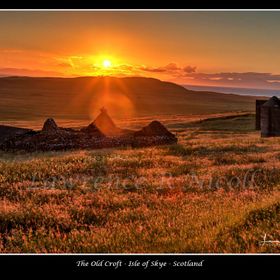Views
285
Likes
Awards
Spring 21 Award
Judge Favorite
Celebrity Award
Absolute Masterpiece
Top Choice
Superb Composition
Peer Award
Outstanding Creativity
Superior Skill
Same photographer See allBehind The Lens
Behind The Lens
Location
The Bay of Fundy in Nova Scotia, Canada, moves more water in one tide than all the rivers of the world combined. The highest tide lowest to highest is 43 feet. The massive movement of water also creates interesting cloud patterns providing an excellent background to any light conditions. Shot at 1/40th seconds, f11, 100 ISO and 100mm on a full frame camera on tripodTime
Only certain times of the year is the sun in position over the open water, at 7:16am on this day Just as the sun rose the colours were just rightLighting
I wanted to catch as much of the sky colour as possible on the water, which while not smooth still had hi-lights. A low angle helps and the sun at or just above the horizon is how to get the full colourEquipment
Shot at 1/40th seconds, f11, 100 ISO and 100mm on a full frame camera on tripod with a Canon 5D SR and a 24-105 L series lens. The tripod is a Feisol carbon fiber tripod with an Acratech ball head. A single axis bubble on the hot shoe keeps my images straight easier than lining up in the viewfinder. A remote control is used and the camera set to raise the mirror first 1/4 seconds ahead of actually firing the shutter.Inspiration
As has been said by many photographers who are famous, early and late light is the key to dramatic images. I am constantly on the hunt for colourful sunsets/sunrises but even aps I have are no guarantee. I just keep in mind a spot that could work then watch then light.Editing
I shoot in raw so certainly post processing is necessary. I start with part of Scott Kelby's seven step process, then use NIK software to bring it all to life. Usually a curves layer to add snap back into the image, and a limited amount of colour vibrance but subtle. In the end my purpose is to bring the viewer to the feelings I had that made take the photo in the first placeIn my camera bag
I always have my Canon 5D SR with a 24-105mm lens. I may also take my 5D MK IV with the Canon 70-300 attached. The ISO on the later is up, set for tracking, higher ISO and rapid fire usually for wildlife as the 5D MK IV works cleaner at higher ISO. I sometimes take along my 80D with a 16-35mm lens so I can get RIGHT down low to puddle to catch reflections and with the tiltable screen I can see better.Feedback
I you want shots that have interesting foregrounds as well as the sunset/sunrise you need to preplan a location. I use aps to find out when and where exactly the sun rises/falls. Be there before sunrise, perhaps catch some of that blue light first. For sunsets both arrive early and stay late as the colours are constantly shifting. If you want starbursts at sunsets they happen JUST as the sun touches the horizon


























